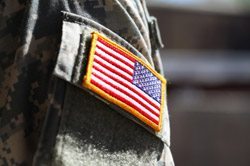Category: National News

Climber Who Survived a Night at Mt. Everest Succumbs to Mesothelioma
Six years ago, Australian mountain climber Lincoln Hall was given up for dead after reaching the summit of Mount Everest and then developing a severe form of altitude sickness. Broadcast reports of Hall’s death were premature though. The tough mountain climber managed to survive a freezing night alone at more than 28,000 feet without food or shelter. Delirious and frostbitten, he greeted an astonished group of ascending climbers at sunrise the next morning. Three days later, he walked off the mountain.
Mount Everest couldn’t vanquish Lincoln Hall. But the rugged climber faced a still greater risk: childhood exposure to asbestos. Six years after his miraculous feat of mountaintop survival, Hall, age 56, died of mesothelioma last Tuesday at a Sydney, Australia hospital after a year-long struggle with the disease, according to The Sydney Morning Herald newspaper.
Mesothelioma is a cancer caused by inhaling toxic asbestos. Hall was exposed to cancer causing asbestos-cement sheets as a child in the mid-1960s while helping his father build playhouses on their property, the newspaper reported. Most people are exposed to asbestos in the workplace, but some people inhale asbestos in the home as well. The microscopic fibers can lodge deep in the lung and remain there a lifetime, causing inflammation and eventually disease.
Many people exposed to asbestos in the 1960s and 1970s are still at risk of developing mesothelioma or may only recently have been diagnosed with mesothelioma symptoms. The respiratory cancer has a long development period and is difficult to diagnose. A skilled author who wrote several best-selling books about mountaineering, Hall was diagnosed with mesothelioma in 2011.
Through his experiences, Hall developed a spiritual affinity with the Himalayas and helped establish the Australian Himalayan Foundation, a not-for-profit organization that raised money for schools in his beloved mountains, according to the Sydney Morning Herald.
Hall’s death surprised many of his friends who believed that Hall was virtually invincible and could overcome mesothelioma, an aggressive form of cancer.

FDNY Retirements Jump Since 9/11
The number of New York firefighters who have taken disability retirement has increased sharply since the terrorist attacks of Sept. 11, 2001, New York researchers report.
In a new online article in the American Journal of Industrial Medicine, researchers at the Albert Einstein College of Medicine in Bronx, New York and New York University analyzed the increased proportion of service-connected accidental disability retirements on the Fire Department of New York pension system.
In the seven years before 9/11, 48 percent of the 3,261 New York firefighters who retired took accidental disability retirements. In seven years after 9/11, 4,502 firefighters retired and 66 percent were accidental disability retirements, nearly half of which were related to injuries or illness from the World Trade Center attacks.
The researchers said that the increase in accidental disability retirements was for the most part due to respiratory-related illnesses. Firefighters have an increased risk of exposure to airborne hazards. Additional increases were attributed to psychological-related illnesses and musculoskeletal injuries from the World Trade Center.
The researchers concluded that the 9/11 attacks affected the health of the FDNY firefighters leading to more retirements than expected and a larger proportion of retirees claiming accidental disability pensions. Pension benefits associated with World Trade Center accidental disability retirements have increased the financial burden on the FDNY pension system by $826 million.
Researchers at the Mount Sinai Medical Center in New York recently reported in the American Journal of Industrial Medicine that NY emergency personnel who responded after the World Trade Center terrorist attacks have shown an increased incidence of pulmonary inflammation. More than 50,000 men and women were exposed to products of combustion, asbestos and particulate matter after the September 11 2001 terrorist attacks.
A previous medical study published last year in the New England Journal of Medicine reported that New York firefighters who worked at Ground Zero still have significantly abnormal lung function nearly a decade later. Some dust from the collapsed World Trade Center towers contained asbestos and other toxics, according to the U.S. Environmental Protection Agency.
In December, Congress provided $1.4 billion over five years for ongoing monitoring and treatment of illnesses stemming from exposure to toxic dust and debris after the 9/11 attacks. Over time, the monitoring program may help define what qualifies as a 9/11-related illness. Several groups are currently conducting studies of cancer deaths among ground zero workers.
Some dust from the World Trade Center destruction contained asbestos and other contaminants, according to the Environmental Protection Agency. Inhaling airborne asbestos is closely associated with respiratory disease including lung cancer and mesothelioma, a cancer of the lining of the lung. Symptoms of mesothelioma typically take 20 to 40 years to appear after exposure to asbestos.

NYC Responders Show Pulmonary Disease
New York emergency personnel who responded after the World Trade Center attacks have shown an increased incidence of chronic pulmonary inflammation, researchers at Mt. Sinai reported in a recent clinical study. More than 50,000 men and women were exposed to products of combustion, asbestos and particulate matter after the terrorist attacks on September 11, 2001.
Mount Sinai researchers studied the medical records of almost 20,000 New York firefighters and emergency responders as part of a World Trade Center Monitoring and Treatment Program. The research, published in 2011 in the American Journal of Industrial Medicine, revealed an elevated number of cases of a pulmonary condition called sarcoid like granulomatous pulmonary disease. The average yearly occurrence of the disease among first responders more than tripled from 15 cases per 100,000 in health screenings before Sept. 11, 2001 to 54 cases per 100,000 in 2003 and 2004 —the peak years, according to the new study. Two other studies have reported similar findings.
Sarcoid Like Granulomatous Pulmonary Disease causes inflammation in one or more organs including the lungs and lymph nodes. Granulomas are small tumor-like nodules in the lungs, lymph glands, liver and salivary glands. Granuloma formation may lead to scarring of the lung, known as fibrosis. The cause of the disease is unknown, but it has been linked to multiple environmental and occupational exposures. A portion of those who develop the disease may suffer permanent lung damage.
“Our findings support the hypothesis that environmental exposures generated by the destruction of the World Trade Center may cause ‘Sarcoid like’ Granulomatous Pulmonary Disease,” said Laura Crowley, assistant professor of preventive medicine at Mount Sinai School of Medicine in a press release.
Some research has shown an association between sarcoid like granulomas, sarcoidosis and cancer, but exactly how they are associated remains unclear.
Crowley said monitoring of World Trade Center responders including periodic chest x-rays, must continue so that the NY responders health issues are identified and treated in the early stages.
Philip Landrigan, MD, chair of the Department of Preventive Medicine at the Mount Sinai School of Medicine, said the results of the study clearly support the critical need for ongoing monitoring and treatment for WTC responders.
A medical study published last year in the New England Journal of Medicine reported that New York firefighters and rescue workers who worked at Ground Zero after the 9/11 terrorist attacks still have significantly abnormal lung function years later. Some dust from the World Trade Center destruction contained asbestos and other contaminants, according to the Environmental Protection Agency. Inhaling airborne asbestos is closely associated with respiratory disease including lung cancer and mesothelioma, a cancer of the lining of the lung. Symptoms of mesothelioma typically take 20 to 40 years to appear after exposure to asbestos.
Free Mesothelioma Patient & Treatment Guide
We’d like to offer you our in-depth guide, “A Patient’s Guide to Mesothelioma,” absolutely free of charge.
It contains a wealth of information and resources to help you better understand the condition, choose (and afford) appropriate treatment, and exercise your legal right to compensation.
Download Now